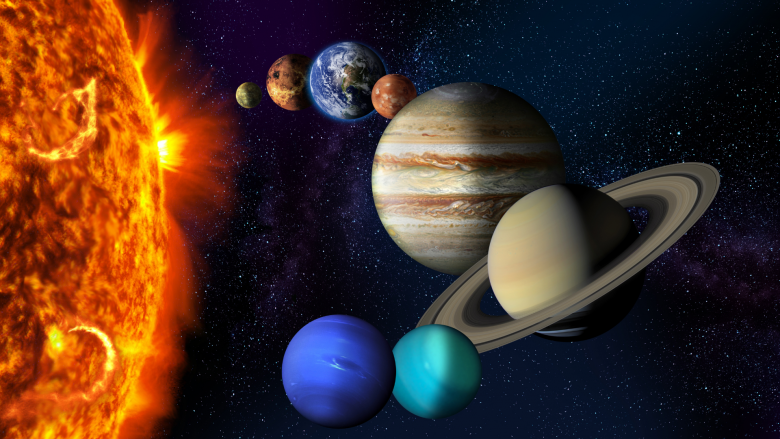The Solar System is a collection of planets, moons, asteroids, comets, and other space debris that orbit around the sun. It began forming 4.6 billion years ago and has since been constantly evolving. The current makeup of the Solar System includes the eight planets that orbit around the sun and the dwarf planet Pluto. The sun is the centerpiece of the solar system, and all the objects orbit around it. In addition, there are also many smaller objects, including asteroids, comets, and meteoroids. The study of the Solar System is known as astronomy, which encompasses the study of the sun, moon, stars, planets, and other objects and phenomena in space.
Which is our solar system?
There are many Solar Systems in the cosmos, but only one that we call home. Our solar system comprises the sun, eight planets and their moons, comets, asteroids, meteoroids, and other small bodies. It resides in a spiral arm of the Milky Way galaxy about 26,000 light-years from the galactic center.
There are many different types of solar systems in existence. The most common type is the solar system with a central star, such as our own sun, and planets orbit around it. Other types of solar systems include binary star systems, in which two stars orbit each other, and brown dwarf systems, in which a small, dim star orbits a larger star. There are also solar systems without any stars, known as rogue planets.
What is a Class 3 solar system?
The solar system is made up of the sun and its planets, asteroids, comets, and meteoroids. It is the largest known system in the universe. Class 3 systems are made up of one or two sun-like stars with planets orbiting them. Most of the planets in Class 3 systems are small, rocky worlds like Earth. There are also gas giants and ice giants in some Class 3 systems. Class 3 systems are the most common type of solar system in the Milky Way galaxy.
The term “Class 3 solar system” describes three times as powerful as the average home solar system. These systems are typically used by businesses and commercial properties with higher energy demand. Class 3 solar systems can range in size from 10kW to 1MW.
How many planets are there?
There are eight planets in the solar system. In order of increasing distance from the sun, they are Mercury, Venus, Earth, Mars, Jupiter, Saturn, Uranus, and Neptune. Pluto was formerly considered a planet but is now classified as a dwarf planet.
There are many different ways to answer the question, “how many planets are there?” Depending on the definition of a planet, there are either 8 or 9 planets in the solar system. The traditional definition of a planet includes bodies that orbit the sun and are large enough to have cleared their neighborhood of smaller objects. Under this definition, there are 8 planets in the solar system: Mercury, Venus, Earth, Mars, Jupiter, Saturn, Uranus, and Neptune. However, a more recent definition proposed by the International Astronomical Union (IAU) in 2006 includes an additional criterion: a planet must be massive enough to have assumed a “nearly round” shape. Under this definition, there are 9 planets in the solar system: Mercury, Venus, Earth, Mars, Jupiter, Saturn, Uranus, Neptune, and Pluto.
The solar system is the system of our sun and planets. The solar system is made up of the sun and all the planets in orbit around the sun except Pluto. The planets orbit the sun at different distances. There are eight planets in our solar system. They are Mercury, Venus, Earth, Mars, Jupiter, Saturn, Uranus, and Neptune.



